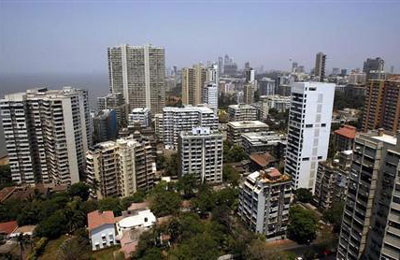
World cities to add 2.5bn more by 2050: UN
, July 11, 2014
More than half of the world's seven billion people live in urban areas, with the top "mega cities" - with more than 10 million inhabitants - being Tokyo, Delhi, Shanghai, Mexico City and Sao Paulo, according to a UN report on Thursday.
That proportion is expected to jump, so that more than six billion people will be city dwellers by 2045, the UN's World Urbanization Prospects report said.
The jump will be driven by a "preference of people to move from rural to urban areas, and the overall positive growth rate of the world's population, which is projected to continue over the next 35 years," John Wilmoth, director of the Population Division in the UN's Department of Economic and Social Affairs said at a news conference Thursday at the UN.
Indeed, urbanisation, combined with overall population growth, will boost the number of people in cities by 2.5 billion over the next three decades, with much of that growth in developing countries, especially in Asia and Africa.
India, China and Nigeria will make up 37 per cent of the projected growth in the next three decades, with India adding 404 million city residents, China 292 million, and Nigeria 212 million, by 2050.
The key challenge for these countries will be to provide basic services like education, health care, housing, infrastructure, transportation, energy and employment for their growing urban populations.
"Managing urban areas has become one of the most important development challenges of the 21st century," Wilmoth said.
He said providing such services for a dense urban population was typically cheaper and less environmentally damaging than doing the same for a dispersed, rural population.
"The thing to be afraid of is situations in which governments do not plan for the growth that is going to take place," Wilmoth said. "Then you can get sprawls, and slums and cities that are not pleasant places to live."
The world's urban population has grown so rapidly that while in 1990, there were only ten mega cities, today there are nearly three times as many - 28 worldwide.
Sixteen of those are in Asia, four in Latin America, three each in Africa and Europe, and two in Northern America.
Tokyo is the world's most populous city with 38 million inhabitants, followed by Delhi with 25 million, Shanghai with 23 million and Mexico City, Mumbai and Sao Paulo, each with around 21 million people.
The New York-Newark urban area, the world's third-largest in 1990, fell to ninth place and is expected to drop further to 14th position by 2030 as cities in developing countries become more prominent, the report said.
Low fertility, economic contraction and natural disasters were the most common factors that contributed to population losses in some Asian and European cities in recent years. Emigration was also a factor.
Meanwhile, the world's rural population, which is now close to 3.4 billion, is expected to reach its peak by 2020, after which it will decline to 3.1 billion by 2050.
While Africa and Asia are urbanizing rapidly, they are still home to nearly 90 per cent of the world's rural population. - Reuters







